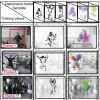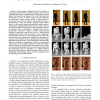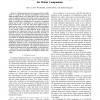22 search results - page 4 / 5 » Spike Train Driven Dynamical Models for Human Actions |
116
click to vote
PAMI
2010
14 years 10 months ago
2010
—Facial expression is a natural and powerful means of human communication. Recognizing spontaneous facial actions, however, is very challenging due to subtle facial deformation, ...
106
click to vote
ICCV
2009
IEEE
16 years 4 months ago
2009
IEEE
In this paper, we present a Deformable Action Template
(DAT) model that is learnable from cluttered real-world
videos with weak supervisions. In our generative model,
an action ...
118
click to vote
IROS
2009
IEEE
15 years 6 months ago
2009
IEEE
— Programming a humanoid robot to perform an action that takes the robot’s complex dynamics into account is a challenging problem. Traditional approaches typically require high...
IROS
2007
IEEE
15 years 6 months ago
2007
IEEE
— This paper puts forward an approach for a mobile robot to recognize the human’s manipulative actions from different single camera views. While most of the related work in act...
96
Voted
HRI
2006
ACM
15 years 5 months ago
2006
ACM
Autonomous robots use sensors to perceive and track objects in the world. Tracking algorithms use object motion models to estimate the position of a moving object. Tracking effic...



